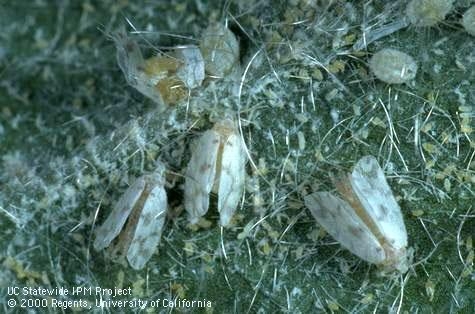The giant whitefly is not a gargantuan monster out of an old sci-fi movie, although it is quite a bit larger compared to other whiteflies. Whiteflies are typically tiny insects that are hard to spot on plants unless they are flying, but the giant whitefly is more obvious. Giant whitefly adults produces spirals of wax on leaves and as the infestation grows, so do the waxy deposits, and soon a susceptible plant can be covered in waxy strands.
This insect is a serious pest of many ornamental plants including begonia, hibiscus, and lantana, as well as on some fruits and vegetables. The giant whitefly sucks out the plant's sap and excretes honeydew, damaging plants and causing sooty mold to grow. The waxy strands produced by the insect can also diminish a plant's appearance.
Giant whiteflies can be managed with an integrated approach including removal of infested leaves and washing whiteflies off the plant with a strong stream of water. Planting resistant species is another way to manage giant whitefly.
Read more about how to manage the giant whitefly in the newly updated Pest Notes: Giant Whitefly, by UC Riverside entomologists Richard Redak and Erich Schoeller, and UCCE Orange County Emeritus Advisor John N. Kabashima. Recent changes include new descriptions of biology, damage, and more information about biological control.
We're looking for your feedback! Please consider taking a quick, anonymous survey to help us serve you better: https://bit.ly/2ZJJVEI
